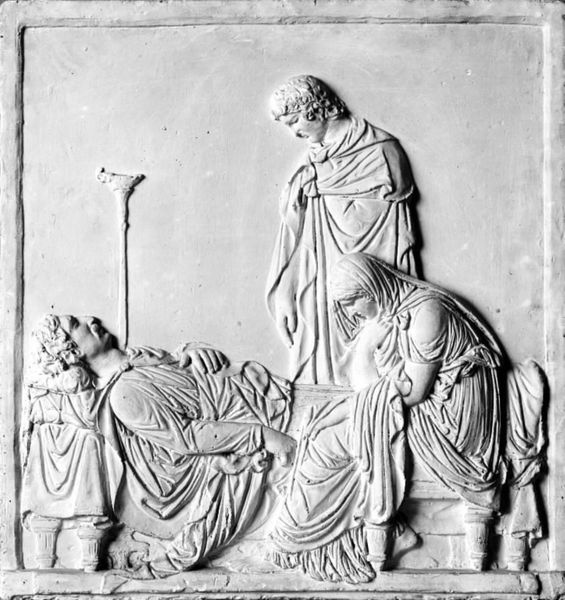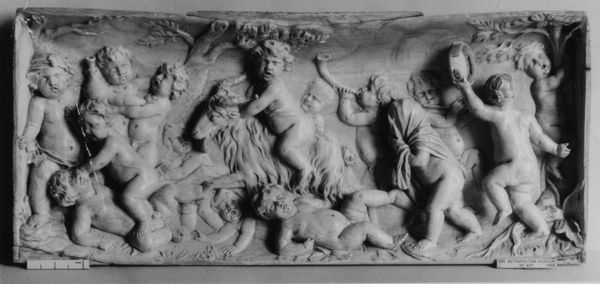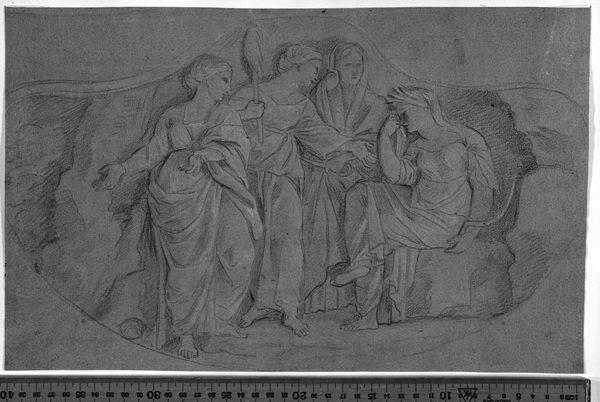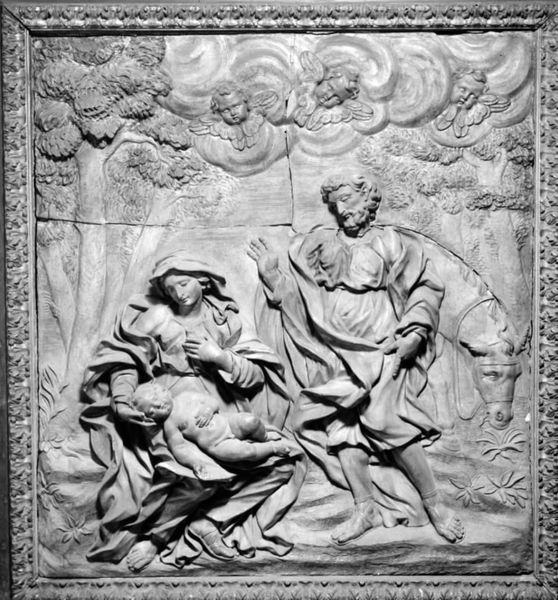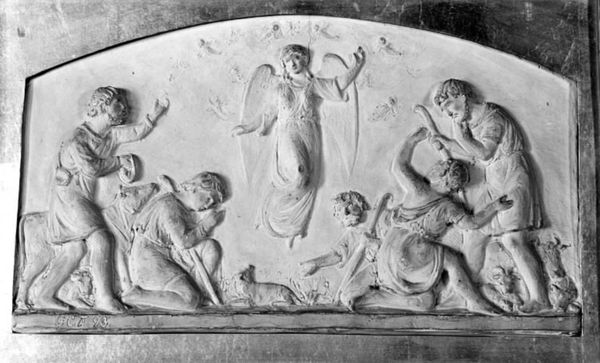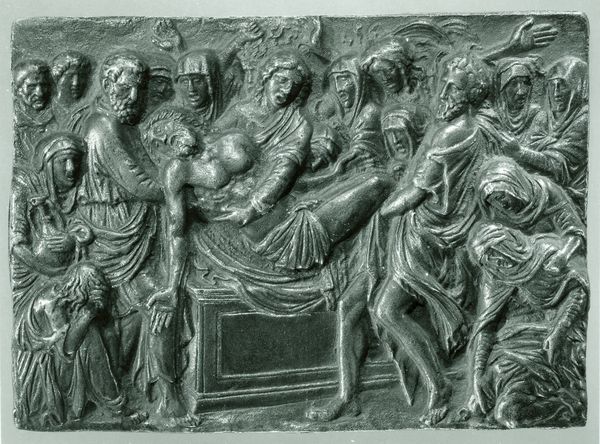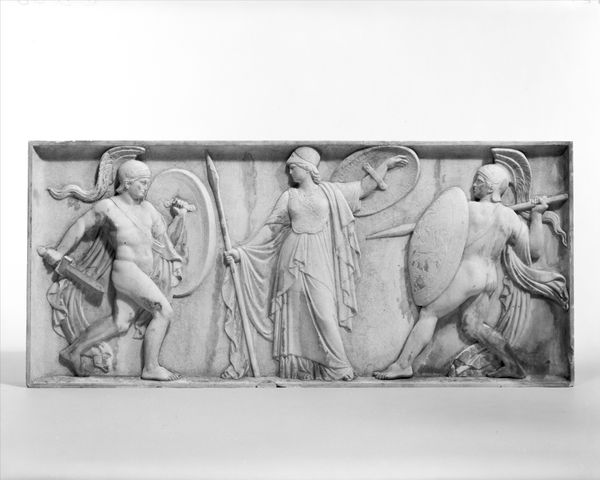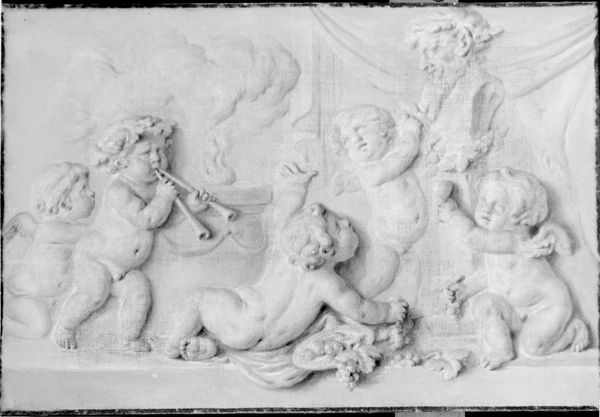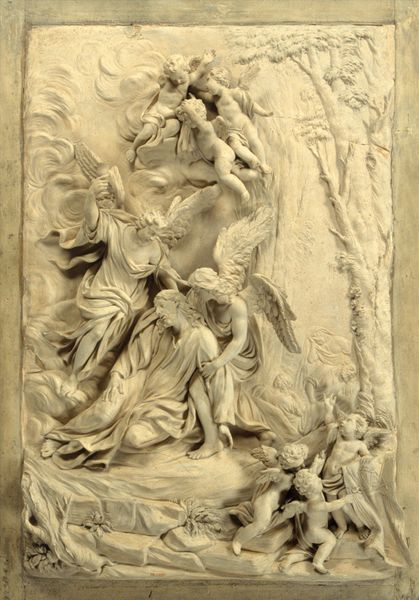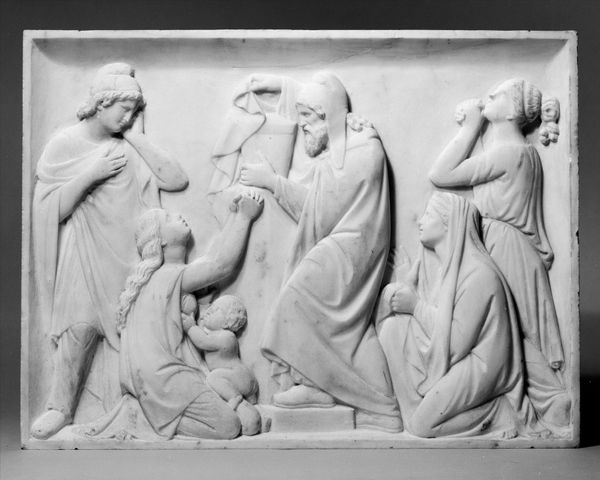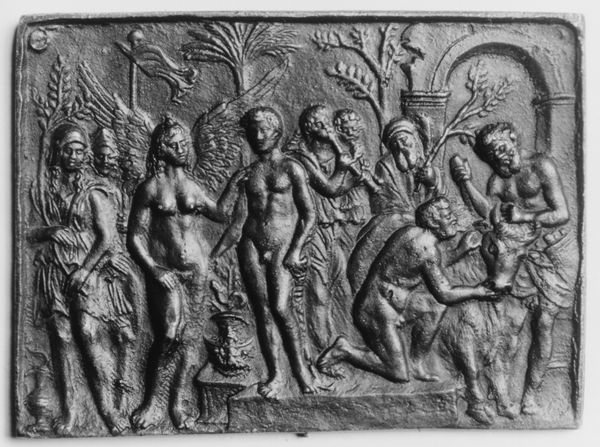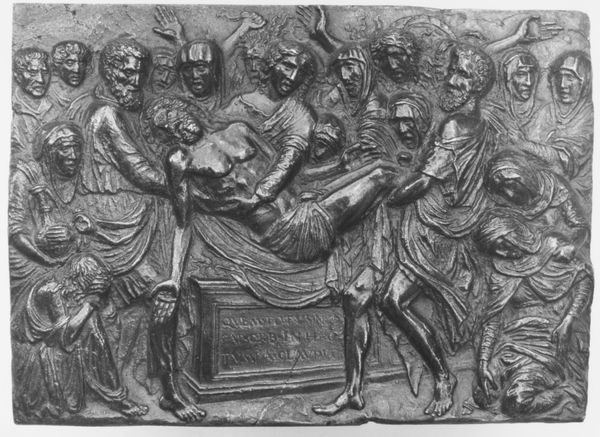
Kristus helbreder Jairi datter. Pige, jeg siger dig, stå op 1823
0:00
0:00
relief, sculpture, marble
#
neoclacissism
#
sculpture
#
relief
#
sculpture
#
history-painting
#
marble
Dimensions: 31.5 cm (height) x 41.5 cm (width) (Netto)
Curator: The texture alone gives me chills. It feels cool and remote. The linear precision… marble really communicates timelessness. Editor: This is a marble relief sculpture completed in 1823 by H.W. Bissen. The artwork is titled "Christ Healing Jairus's Daughter". The sculpture portrays a biblical story. Curator: I see immediately the formal neoclassicism in this piece. See how Bissen emphasizes line over color and movement. He directs our attention to these distinct contours to convey the biblical story, rather than rely on emotive expression. Editor: Right. We see Neoclassicism functioning as a cultural signifier here, connecting with ideals of order and rationality that align with the values and aesthetics privileged by the dominant class in early 19th century Denmark. Think about the function of art within the religious landscape and in terms of power. Who commissions this work and how is it used in relationship to notions of ideal beauty? Curator: Indeed, look at the idealized physiques. But back to the aesthetics: I see how Bissen also uses very shallow relief, almost two-dimensional, and balances it by the strong horizontal emphasis to underscore the serenity, that feeling of detached composure…even amidst what would be a fairly emotional moment. Editor: In art, serenity translates into control. Control of the body, control of narrative, control of faith and also, therefore, potentially a commentary on class and power relations at play in religious spaces during that era. By visually embracing this sense of ordered restraint, the artwork reflects, in its marble and in its form, the desired decorum of the time. It’s fascinating how a material choice contributes to the broader historical and social context. Curator: For me, tracing the lines in the marble, you truly appreciate how effectively Bissen’s visual rhetoric shapes our encounter with such stories of faith and power. It really makes you consider how his artistic choices might challenge or, more likely, reaffirm that societal structure. Editor: Exactly, and isn't that a good challenge for the viewer, to recognize how these works played a part in shaping historical thought and discourse? Curator: It certainly is. Thank you.
Comments
No comments
Be the first to comment and join the conversation on the ultimate creative platform.
